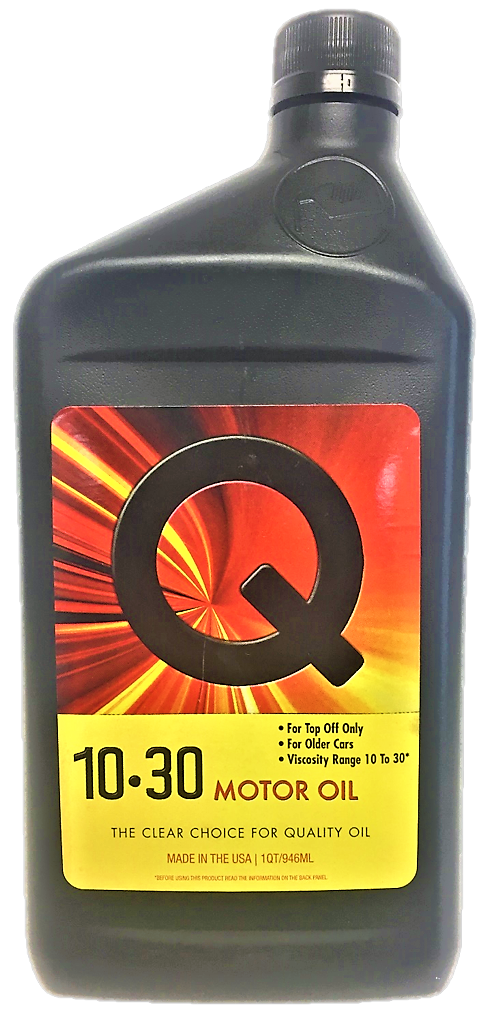Is there any difference in oils that do not have the W, if the viscosity rating is low enough. In other words, would a 10-30, be different than a 10W-30, since they both have the same range?
You are using an out of date browser. It may not display this or other websites correctly.
You should upgrade or use an alternative browser.
You should upgrade or use an alternative browser.
The W in oil specs
- Thread starter lenjack
- Start date
There is no such thing as a "10-30" without a winter rating, the first number in the multiviscosity designation is the winter rating. It should be listed this way if it is an SAE grade. Monograde oils will only have one number and they may also have a "W", but they are not multiviscosty oils.
Where are you seeing oils listed as "10-30"?
Where are you seeing oils listed as "10-30"?
10-30 is not a real grade, 10W-30 is a real grade, now in passive conversation people familiar with multigrade oil might refer to it as five thrity or ten thirty, the only stuff that I've seen that says 10-30 on the bottle is cheap noname crap that the PQIA tested that failed to comply with any modern oil standards.
Example being:

 pqiadata.org
pqiadata.org

PETROLEUM QUALITY INSTITUTE OF AMERICA TEST PROGRAM
The Petroleum Quality Institute of America (PQIA) is an independent resource for information and insights on the quality of lubricants in the marketplace. Our mission is to serve the consumer of lubricants by randomly sampling and independently testing lubricants taken from the field. Test...
 pqiadata.org
pqiadata.org
Key item on that page:Example being:

PETROLEUM QUALITY INSTITUTE OF AMERICA TEST PROGRAM
The Petroleum Quality Institute of America (PQIA) is an independent resource for information and insights on the quality of lubricants in the marketplace. Our mission is to serve the consumer of lubricants by randomly sampling and independently testing lubricants taken from the field. Test...pqiadata.org
Use of this product in virtually all automobile engines will likely cause harm to the engine.
W =

That’s a great question; I googled 10-30 and didn’t get any answersThere is no such thing as a "10-30" without a winter rating, the first number in the multiviscosity designation is the winter rating. It should be listed this way if it is an SAE grade. Monograde oils will only have one number and they may also have a "W", but they are not multiviscosty oils.
Where are you seeing oils listed as "10-30"?
"W" for Whoa.
10-30=-20
10-30 is not oil.
10-30 is not oil.
lenjack
Thread starter
This is not news to me. I know the W signifies winter use. I was simply wondering, why the W was necessary.
Zee09
$200 Site Donor 2023
W=Women or as @aquariuscsm. Says Hot Women.
MolaKule
Staff member
Is there any difference in oils that do not have the W, if the viscosity rating is low enough. In other words, would a 10-30, be different than a 10W-30, since they both have the same range?
Multi-grade oils are classified by "Grades" which refers to a range of viscosity:
"...What does the "w" in a grade of motor oil stand for?
The "w" in motor oil stands for winter. The first number in the oil classification refers to a cold weather viscosity. The lower this number is, the less viscous your oil will be at low temperatures. For example, a 5W- motor oil will flow better at lower temperatures than a 15W- motor oil. The higher number, following the “w” refers to hot weather viscosity, or how fluid your oil is at hot temperatures. The higher the number, the thicker the oil at a specified temperature..."
Frequently Asked Questions - Valvoline™ Global
Whether you have questions about motor oil, our involvement in racing, or our business, you can find easy-to-understand answers here.
and

Viscosity Charts - Bob is the Oil Guy
Viscosities can be related horizontally only Viscosities based on 96 VI single grade oils. ISO are specified at 40°C AGMA are specified at 40°C SAE 75w, 80w, 85, 5w, & 10w specified at low temperature. Equivalent viscosities for 100° & 210°F are shown SAE 90 to 250 and 20 to 50 specified at...
bobistheoilguy.com
Last edited:
Why you mad?W=Women or as @aquariuscsm. Says Hot Women.
Zee09
$200 Site Donor 2023
Yeah, I know ... we've been going out for 6 months just in case you didn't know.Cause that's my sister
Zee09
$200 Site Donor 2023
I'm dating her cousin..Yeah, I know ... we've been going out for 6 months just in case you didn't know.
There was a 20W-20 not that many years ago.
My 2¢
My 2¢
Similar threads
- Replies
- 17
- Views
- 1K
- Replies
- 23
- Views
- 1K
- Replies
- 15
- Views
- 628
- Replies
- 28
- Views
- 2K

